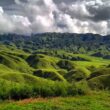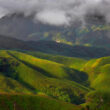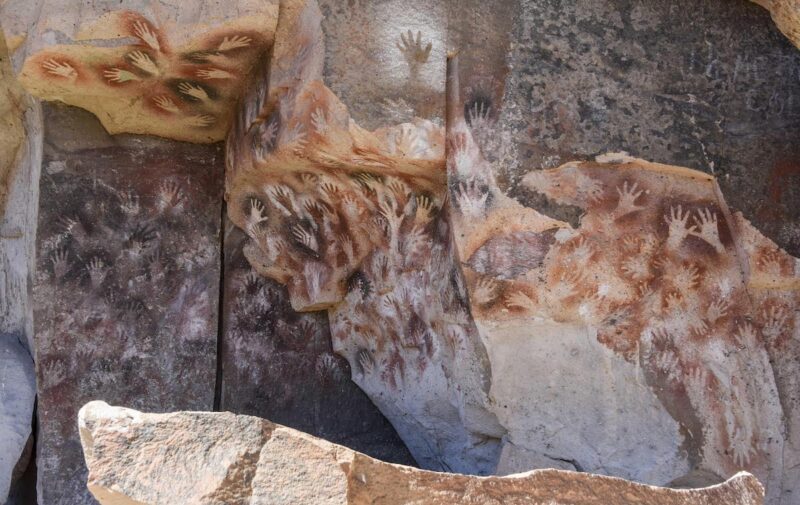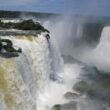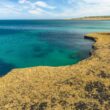Tucked away in the remote Río Pinturas Canyon in Argentine Patagonia lies one of the most extraordinary pieces of prehistoric art in the world — Cueva de las Manos, or “Cave of the Hands.” Declared a UNESCO World Heritage Site in 1999, this site features stunning hand stencils, hunting scenes, and animal depictions created by the ancestors of today’s indigenous Patagonian peoples over 9,000 years ago.
This cave is not just a window into ancient artistry; it’s a living testimony of human expression, survival, and connection with nature. If you’re passionate about archaeology, history, or off-the-beaten-path travel, Cueva de las Manos offers a uniquely powerful experience.
Historical Background: A 9,000-Year-Old Gallery
The cave’s name comes from the hundreds of handprints painted on the rock walls — most of them left hands, likely created by blowing paint through a bone tube over a hand placed on the wall. The artwork dates from circa 7300 BC to 1000 AD, and showcases:
- Hand stencils
- Human and animal figures
- Hunting scenes
- Geometric patterns and abstract symbols
These works were made by hunter-gatherers and reflect a spiritual and cultural worldview centered on survival, community, and nature.
Where is Cueva de las Manos Located?
- 📍 Province: Santa Cruz, Argentina
- 🏔️ Region: Patagonia
- 🌍 GPS Coordinates: 47°09′ S, 70°39′ W
- 🏞️ Nearest Town: Perito Moreno (not to be confused with the glacier)
The site is situated within the stunning Río Pinturas Canyon, where dramatic cliffs and vibrant desert landscapes create a breathtaking natural backdrop for the ancient art.
The Art: What You’ll See
✋ Hand Stencils
- Created using natural pigments like iron oxide (red), kaolin (white), manganese oxide (black), and plant-based dyes.
- 90% are left hands — indicating that the right hand was used to hold the spray tube.
- Some prints appear distorted, indicating ritualistic or symbolic intent.
🦌 Hunting Scenes
Depictions of guanacos (wild llamas) and hunters using bows and arrows — some of the earliest visual evidence of this weapon in South America.
🧍♂️ Human Figures and Symbols
Figures engaged in dances or ceremonies, spiral motifs, sun-like patterns, and grids hint at a complex social or spiritual system.
How to Visit Cueva de las Manos
🧭 Getting There
- From Perito Moreno: ~2-hour drive on gravel roads.
- From El Calafate or El Chaltén: A full-day trip or multi-day excursion.
- By tour: Many local agencies offer guided visits, often as part of a Patagonia archaeological package.
🕘 Opening Hours & Fees
- Open year-round
- Guided tours only (to preserve the artwork)
- Entrance fee: ~$10 USD
Best Time to Visit
- Spring and summer (October to March) are ideal for better weather and clearer roads.
- Early morning or late afternoon offers better lighting for photographs.
What to Bring
- Sunblock and hat — it’s very exposed to the sun.
- Comfortable walking shoes.
- Water and snacks (no services nearby).
- Camera (no flash allowed near paintings).
- Warm layers — Patagonian weather is unpredictable.
Why Cueva de las Manos Matters Today
This site isn’t just important for Argentina — it’s globally significant for understanding prehistoric human behavior, early art, and cultural development in the Americas. It provides a unique example of how ancient humans used art to record stories, express identity, and build community.
Today, it stands at the center of cultural heritage preservation in South America, with ongoing conservation efforts and archaeological research helping us uncover new insights.
Nearby Attractions
- Cañadón Caracoles: Nearby rock formations and lesser-known archaeological sites.
- Ruta 40 road trip: One of the most scenic routes in Argentina, linking the cave with iconic places like El Chaltén and Bariloche.
- Patagonian steppe wildlife: Spot guanacos, armadillos, and Andean condors in the wild.
Sustainability and Preservation
Because of its fragility, access to Cueva de las Manos is strictly controlled. UNESCO and the Argentine government have implemented policies to:
- Limit visitor numbers
- Prevent vandalism and erosion
- Monitor humidity and temperature
- Educate the public on the importance of rock art preservation
10 Frequently Asked Questions (FAQs)
1. What is Cueva de las Manos?
It’s a prehistoric rock art site in Argentine Patagonia known for hand stencils and hunting scenes dating back over 9,000 years.
2. Why are most of the handprints left hands?
Because the artists likely used their right hand to blow pigment through a bone tube onto their left hand.
3. Is it difficult to reach the cave?
It’s remote but accessible by car or tour from Perito Moreno, typically requiring gravel-road travel and short hikes.
4. How long does a visit take?
The guided tour lasts about 1.5 to 2 hours, including the walk to the site and interpretive explanations.
5. What materials did the ancient artists use?
They used natural pigments from minerals and plants, and tools like bone tubes to spray paint.
6. Can I take photos inside the cave?
Yes, but without flash to prevent damage to the artwork.
7. Is the site wheelchair accessible?
No, the terrain includes uneven paths and stairs into the canyon.
8. Are there any facilities nearby?
Very few — plan ahead. Bring your own water and snacks, and use restrooms before arriving.
9. What other archaeological sites are nearby?
Other Patagonian caves contain rock art, but Cueva de las Manos is the most famous and accessible.
10. Is it safe to travel in this area?
Yes, it’s very safe. Just ensure your vehicle is equipped for rural travel and bring a physical map or GPS.
Read about all the World Heritage Sites
Conclusion: A Journey Into the Soul of Ancient Patagonia
Cueva de las Manos isn’t just a site to see — it’s a place to feel. Standing in front of those ancient handprints, you’ll sense the presence of people who lived, loved, hunted, and dreamed here thousands of years ago.
It’s a perfect blend of natural beauty, cultural richness, and human creativity, making it a must-visit destination for history buffs, adventurers, and travelers seeking meaning beyond the surface.

